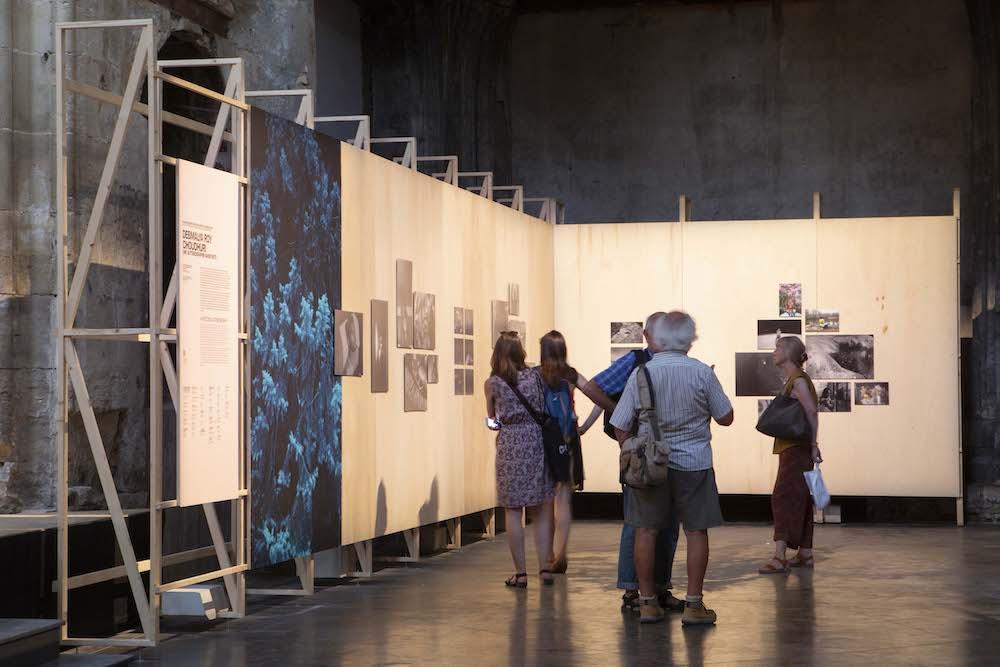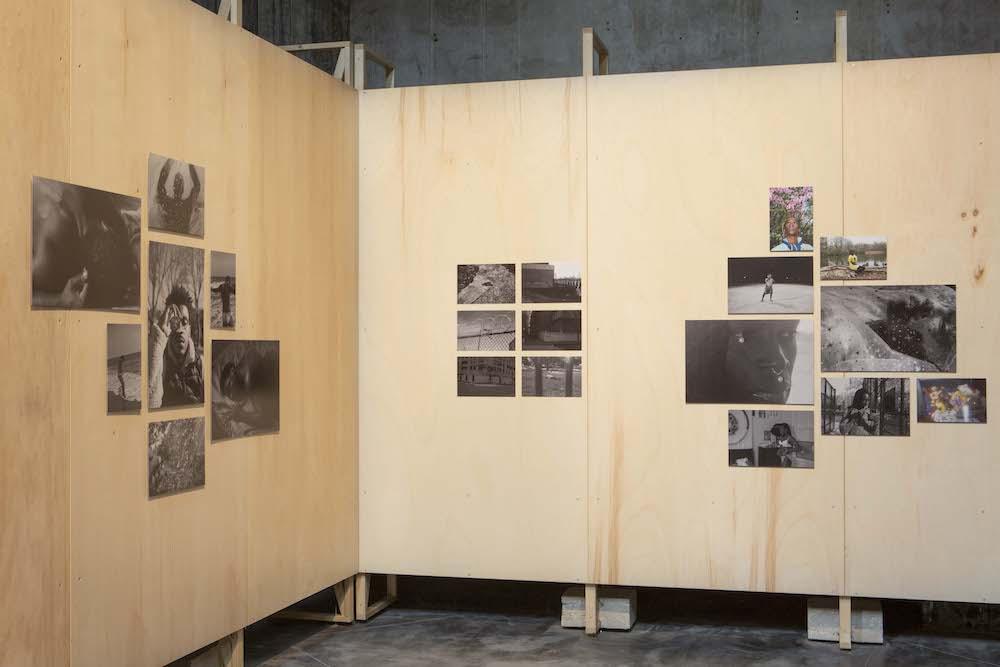Image-making and Community: In Conversation with Debmalya Roy Choudhuri
Debmalya Roy Choudhuri’s work in Arles—part of the Louis Roederer Discovery Award, and presented by Space Studio, Baroda—brings together photography’s reactive and performative elements in order to animate and realise the contours of self in a world that may seem removed from the everyday. Curated by Taous R. Dahmani, whose research interests focus on the “…photographic representation of struggles and the struggle for photographic representations”, the series has been presented in an austere setting of the Église des Frères Prêcheurs, together with other awardees.

Installation view of A Factless Autobiography at Les Rencontres d'Arles.

Installation view of A Factless Autobiography at Les Rencontres d'Arles.
In this interview, we focus on Choudhuri’s exhibition titled A Factless Autobiography, a title which he intimates is a reference to Portuguese author Fernando Pessoa’s Book of Disquiet. The fragmentary or episodic narrative-mode in Choudhuri’s display assumes a non-linear form, much like a “stream of consciousness” around notions of subjectivity and othering—a varied intimate and personal tale that seeks to become counter-narrative to the homogenising, majoritarian claims around gender and self-expression. The images are perceivably a means to a revisionist ideology, associated with unconscionable trauma on vulnerable populations that suffer racial and other forms of stereotyping.
The series makes the visitor ponder the dimensions of the “real,” the “authentic” as well as the dialectic of being/becoming. Its symbolism lies in questioning location, identity or affiliation, and how through practice we may continue to encounter ourselves, to hold the mirror up to ourselves, and to ask whether it is even possible to fully understand who/what we are.

Insomnia. Brooklyn.

Fishnets, Home after Dark.
ASAP: Turning the camera on oneself and one's life can also be a way of associating with a community. Can you share some of the impulses around creating this body of work and the challenges therein?
Debmalya Roy Choudhuri (DRC): This work, which is an extract of a larger diary of situations and encounters in America, evolved as a response to the death of my lover in India. I was in America around that time. Distant from home, unable to grieve the loss of a close person, confronting my own personal adversities in a foreign land led me to look at image-making itself as a way of finding a community in difficult times. The moment created an urgency within me to talk about embracing one’s own self, and my relation to the “other”, through a series of encounters. This is sometimes seen through spontaneous moments of proximity and sometimes as a collaborative performance between the persons photographed and me.
I believe there is a marked difference in how sexuality and identity are viewed between the West and the East. It is this gap that has always fascinated me and it became more prominent when I came to the United States of America. I tried to overcome my own sense of loss and trauma and to find a new way of belonging, which was challenging at first. This challenge in itself induced hope in me—the hope to use photography as a conversational means, as an instrument to stay alive, and talk about the multiple experiences of people, some of whom, through their own fragile lives and choices, have often helped and challenged me to accept the past and look for a reconciliation. The need to talk about my own identity, to talk about being “queer” in the current socio-political context was realised through the diaristic form. Lives are flawed but the journey must continue. And so, though it was my own despair that drove me, it was equally the desire within me to keep going, despite what life had been.

The Gaze. Home.

America.
ASAP: As part of the South Asian/Indian diaspora in the United States, how has your work been received within and outside the region?
DRC: I believe I am a very private person and I am not entirely sure of how the series has been perceived. I have also not shown this work in many places—including India/South Asia—in a larger form. There are more images and many layers that remain unseen. However, I do feel that the little traces of it that I have managed to show have been accepted, and there are people who can relate to the questions I try to address through my own life and experience. Of course, being a South Asian artist who is currently based in the West, and is trying to provoke questions around class, gender and racial biases present in all our systems comes with its own set of challenges—those associated with visibility and acceptance. Despite this, I try to use my practice to keep defining my own position, to find a community of lovers and friends who might be very different from each other, but are bound together through emotive/affective threads, visualised in my own images. I try to not think so much about being accepted because it is a difficult world that we currently live in and a lot of art ecosystems are driven by what is “trending.” What matters for me is to keep making my own images in the most honest and innocent ways.

Where does it all end? New York.
ASAP: What were some of the key artistic/curatorial conversations/interactions that led to the display of this work? Does it have political import?
DRC: This work, which is as much as a personal comment on the societal condition in America and my own experience within it, also talks about people’s lives at the face of political violence, racism and gender struggles. The exhibition foregrounds three protagonists—myself and two other friends—and how we define our own personal and political positions post-2016 in the United States, where we witnessed a direct descent into right-wing extremism.
Some of the significant conversations I had at length were with the show’s curator and art historian and writer Taous R. Dahmani. By talking about care, community and life itself, we decided upon this display by focusing on three people, who were then seen with landscapes and situational/documentary images in order to talk about the personal and the political.
The exhibition also drew upon another manifestation titled “Photography from the Breath.” I built upon it through conversations with writers and friends, especially immigrants and friends from the LGBTQ communities as they spoke about their daily experiences and the need to feel accepted and acknowledged for who they/we are. Perhaps this act of “making visible” through a collaborative and personal lens is a political act in itself. I have always believed that the personal is political; they are not different. Every choice we make—including who or what we show, how we photograph, why we choose to photograph something or someone, how we live our lives—everything is associated with our political understanding of the world.

Rockaways. New York.
All images by Debmalya Roy Choudhuri. Images courtesy of the artist.
Antoine Bertron, a graduate student of photography, is working with ASAP | art for the duration of the festival and conducted this interview along with ASAP's Founder Rahaab Allana.
To read more about Rencontres d'Arles, please click here and here.




